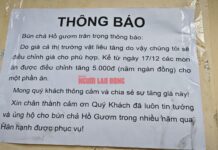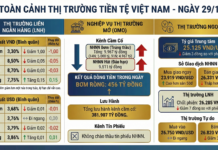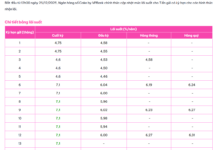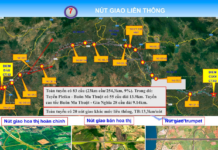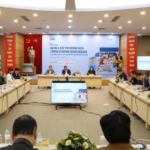On January 29, 2024, in Hanoi, the United Nations Development Programme (UNDP) in collaboration with the People’s Committee of Binh Thuan province organized a workshop called “From farms to tables: Sustainable green dragon fruit in Binh Thuan”.
DRAGON FRUIT INDUSTRY CHARTS NEW PATH
In her opening remarks, Ms. Ramla Khalidi – Resident Representative of UNDP in Vietnam, stated that the workshop aims to introduce the success of the project “Promoting private sector engagement in low-carbon emission and climate change adaptation of the agriculture sector in the implementation of Vietnam’s NDC”. The project has been implemented by UNDP and the Ministry of Agriculture and Rural Development in coordination with Binh Thuan province and Bac Lieu province from 2019 to 2023, with financial support from the Governments of Germany, Spain, and the European Union.
“One of the prominent achievements of the project is the carbon footprint traceability system for dragon fruits in Vietnam, which allows consumers to know the carbon emissions during the production process of dragon fruits. This is evidence that Vietnam has, is, and will be able to apply innovative approaches to develop green agriculture, adapt to climate change,” affirmed Ms. Ramla Khalidi. Based on the experience in Binh Thuan, UNDP is ready to collaborate with the Ministry of Agriculture and Rural Development to develop a national plan for sustainable agriculture transformation, low carbon emissions. From there, sustainable financial mechanisms can be utilized to scale up these models nationwide.
According to Mr. Nguyen Do Anh Tuan, Director of the International Cooperation Department of the Ministry of Agriculture and Rural Development, Vietnam is currently one of the developing countries making strong commitments to climate change adaptation, including: Commitment to achieve net-zero emissions by 2050; commitment to participate in the Global Methane Initiative; commitment to implement the Glasgow Statement on forests and land use to prevent deforestation. At the recent COP28, Vietnam, along with more than 140 countries, passed the “Emirates Declaration on Sustainable Agriculture, Resilient Food Systems, and Climate Action.”
Thus, it can be seen that the transition of agriculture and the food system in Vietnam in general, and the value chain of the dragon fruit industry in particular, towards green, low carbon emissions, sustainability, and climate adaptation, integrated with multiple values and modern management systems, transparency tied to the digital transformation process… is a necessity and contributes to the implementation of national strategies, action plans, and international commitments in the agriculture and rural development sector.
However, according to Mr. Tuan, the dragon fruit value chain is facing many challenges as China, India, and Mexico have successfully cultivated this type of fruit. In 2021, China announced a production of 1.6 million tonnes of dragon fruits per year, surpassing Vietnam’s dragon fruit production – which poses a major challenge to Vietnam’s dragon fruit industry. Therefore, our dragon fruit industry needs a new direction.
Binh Thuan has the largest area and volume of dragon fruits nationwide. Currently, in the province, there are about 27,000 hectares of dragon fruits with a production of over 600,000 tonnes per year.
“Through the project, more than 80,000 9W LED lights have been installed in dragon fruit gardens. “Switching from Compact lamps to using 9W LED lights has saved over 50% of energy consumption and contributed to a 68% reduction in greenhouse gas emissions. In addition, the application of water-saving irrigation systems has reduced water usage by 41.67%. Furthermore, cooperatives have utilized renewable energy and green energy through the installation of solar energy systems for product packaging and irrigation,”
Mr. Doan Anh Dung, Chairman of the People’s Committee of Binh Thuan province.
To achieve sustainable production and high economic efficiency, and meet the requirements of export quality goods and domestic consumption, since 2009, according to Mr. Doan Anh Dung, Deputy Secretary of the Provincial Party Committee, Chairman of the People’s Committee of Binh Thuan Province, the People’s Committee has focused on directing the implementation of the dragon fruit production program according to VietGAP standards. In the period of 2021-2023, Binh Thuan has been supported by the Ministry of Agriculture and Rural Development and UNDP to participate in the pilot program to attract the participation of farmers from cooperatives and businesses in greening the dragon fruit supply chain.
PRODUCTION DIARY TRACKING CARBON FOOTPRINT IS THE “VISA” TO EUROPE FOR DRAGON FRUITS
Mr. Phan Van Tan, Deputy Director of the Department of Agriculture and Rural Development of Binh Thuan province, said that Binh Thuan’s dragon fruits have been exported to 20 countries worldwide. The main export markets are in Asia (Hong Kong, Taiwan, China, the Philippines, South Korea, Singapore, Thailand, Malaysia, Myanmar, Indonesia, Qatar, India, the United Arab Emirates – UAE) accounting for 73.6% of the volume and 56.6% of the value; European countries (Germany, the Netherlands, Russia, Spain) account for 18.1% of the volume and 28.7% of the value; the Americas (Canada, the United States) account for 8.1% of the volume and 9.3% of the value, and Oceania (Australia, New Zealand).
According to Mr. Tan, the project “Promoting private sector engagement in low-carbon emission and climate change adaptation of the agriculture sector in the implementation of Vietnam’s NDC” has been implemented in 4 cooperatives/businesses in 3 districts of Binh Thuan province, with a total of 4,495 beneficiaries. Among them, 1,038 people (accounting for 23.09%) directly benefited and 3,457 people (accounting for 76.91%) indirectly benefited.

In order to expand the export market to the EU, the project has implemented the application of an electronic traceability system in cooperatives and dragon fruit businesses, thereby cooperatives and businesses have demonstrated improved product quality and enhanced market competitiveness through a transparent and responsible traceability system. From an initial 50 hectares with traceability, it has now expanded to 269 hectares that have been tracked for carbon emissions, attracting 188 families to practice green methods in the dragon fruit supply chains of Binh Thuan.
“Transparency from production to processing, the project has developed the Production Diary subsystem with carbon footprint tracking for processed products; QR codes can be scanned to demonstrate the quality and environmental responsibility of dragon fruit processing activities in Binh Thuan. This is an innovative breakthrough in the project implementation,”
Mr. Phan Van Tan, Deputy Director of the Department of Agriculture and Rural Development of Binh Thuan province.
As of December 2023, approximately 8,640 hectares of dragon fruits, equivalent to 23,300 tonnes of dragon fruits, have been monitored for carbon emissions. This result marks the success of sustainable production and responsible export of dragon fruits in Binh Thuan province. Besides, achieving GlobalGAP certification helps cooperatives/businesses meet the requirements for signing export contracts to high-end markets. Many batches of dragon fruits have been exported to Europe and Australia.




